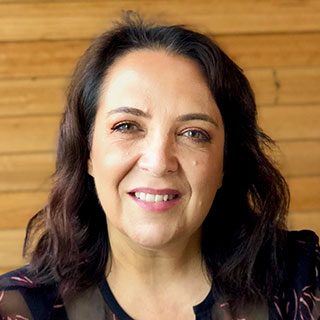Module 4:
Signalling Molecules
The forth module within the sequence expands on the topic to include signalling molecules within the whole body and students have the freedom to choose a molecule from the categories of neurotransmitter, hormone, cytokine or pheromone. They relate it to signal transduction in addition to inter-cellular communication. In this way, their knowledge of the stimulus response mechanism is consolidated while their knowledge of tissue interactions via nerves, blood and close or direct contact: neuronal, endocrine, paracrine and contact-dependent, is constructed.
Summary
VCE Biology (2017-2021)
Unit 3, Area of Study 2, Outcome 2, VCE Biology Study Design
Key knowledge
- Cellular signals
- the sources and mode of transmission of various signalling molecules to their target cell, including and animal hormones, neurotransmitters, cytokines and pheromones
- the stimulus-response model when applied to the cell in terms of signal transduction as a three-step process involving reception, transduction and cellular response
- difference in signal transduction for hydrophilic and hydrophobic signals in terms of the position of receptors (on the membrane and in the cytosol) and initiation of transduction
With a focus on:
- Sources of production
- Modes of transmission
- Stimulus-responses
Duration

Student learning outcomes
Upon completion of this module students will be able to:
- Apply their knowledge of signal transduction to their signalling molecule
- Be able to describe one signalling molecule pathway (not including negative feedback) from source to effector tissue response via signal transduction
- Understand receptors to be on the membrane or in the cytosol
- Appreciate the diversity of signalling molecules
Teacher background information
Module description
In this module, the students research and represent signalling molecules and create a presentation in a form they wish to. It is an extension of the stimulus response model providing a macroscopic picture.
Resources
Teaching sequence
Inquiry Question
How do other signalling molecules work in the body?
Student learning outcomes
On completion of this module, students will be able to:
- Apply their knowledge of the stimulus response model to either a neurotransmitter, hormone, cytokine and pheromone.
- Understand the difference between hydrophilic and hydrophobic signalling molecules
Duration

Prior Knowledge
- Students understand the stimulus response model as a three-step process involving a receptor, signal transduction molecules, and cellular response.
- Students understand there are cellular membrane receptors but have not studied nuclear receptors.
Activities
Activity 4.1 - What are the intracellular pathways of other molecules in the body? (1.5 hours)
[Peer and Summative Assessment/SAC Opportunity]
Assessment: Outcome 2 The students apply a stimulus response model to explain how cells communicate with each other.
This activity provides an opportunity for students to investigate novel molecules in the context of a signalling molecule pathway. Starting off by eliciting pre-existing knowledge doing a whole body drawing the students then choose a signalling molecule and decide on a mode of representation. The students must answer several questions that promote an understanding on inter-cellular mechanisms as well. Hydrophobic and hydrophilic signalling molecules are chosen in addition to different effector tissues.
Whole body drawing
In groups of three or four students use large pieces of butcher’s paper to draw the inside of the human body and students share their understanding of the inside of the body. The teacher focuses on the endocrine system and nervous system as systems that use signalling molecules to coordinate functions of the body.
A song/script/essay/Power Point presentation/roleplay/labelled drawing.
Individuals or pairs research the inter and intracellular processes involving neurotransmitters, hormones, cytokines and pheromones on a target tissue.
In this way the signal transduction pathway as the intracellular mechanism, in addition to information learned about the extracellular signalling molecules, can be extended and consolidated.
Note: the study design “does not require the study of specific chemicals (i.e. G protein pathways, names of second messengers).”
Rubric: The minimum amount of information students must make visible include:
- Without this signalling molecule the body would ___
- Name and nature of the ligand/s and source cell/s
- Type and position of receptor it effects
- Mode of transmission
- The correct representation of events: reception, steps in transduction and the cellular response.
- An appropriate message reflected as a response to the signalling molecule.
[Evaluative]
Activity 4.2 - What are the different types of cellular signalling? (45-50 minutes) Students are given the opportunity to present their work to the teacher or whole class. Marks are given according to the rubric above or otherwise devised by the teacher. Can include a peer feedback and self-reflection sheet as part of the assessment.
Presentations
The students are given 5 minutes to present their work: the stimulus-response mechanism for their signalling molecule and the action of a current drug.
Exit Pass
In conjunction with the presentations students understand what each person or pair has researched and chooses a signalling molecule to answer the following questions.
- Was it a/an: Endocrine signal? Paracrine signal? Neuronal signal? Contact-Dependent signal?
- Can it pass through the membrane or not?
- Does this mean it is hydrophobic or hydrophilic?
- What was the target tissue/cell?
- What was the response?
 Contemporary VCE Biology
Contemporary VCE Biology


